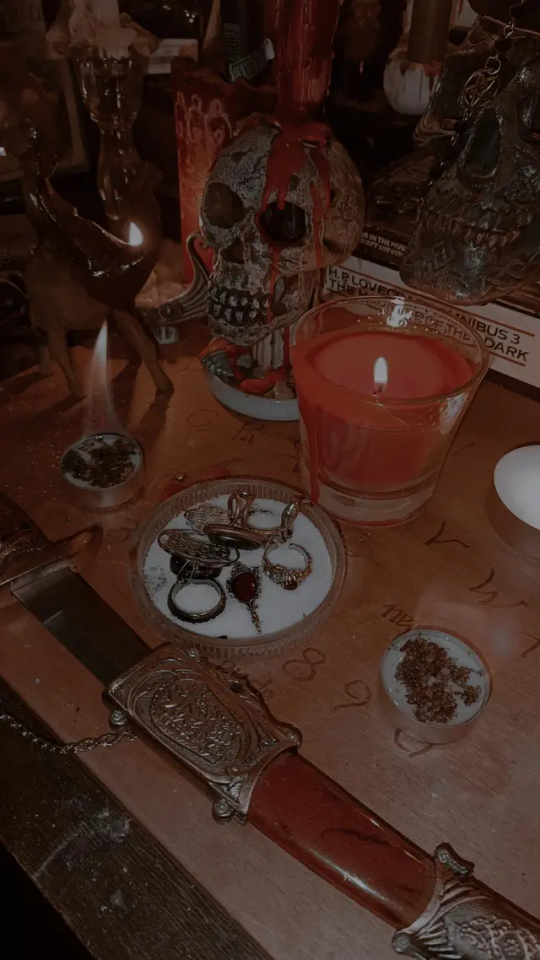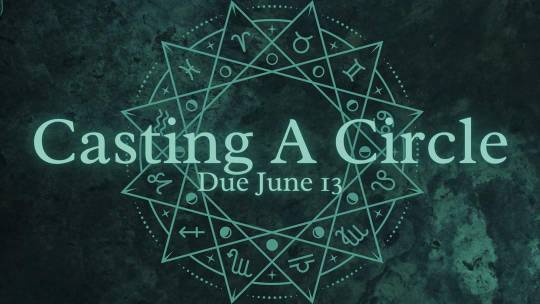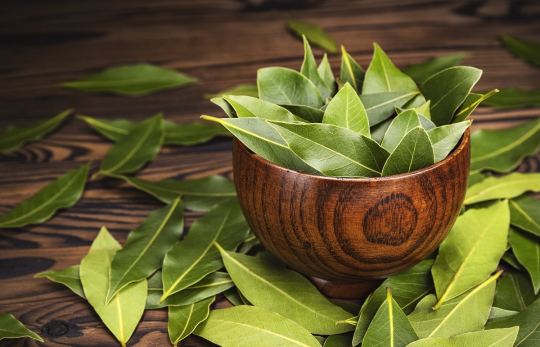archive blog for the realm of the occult discord server ✨ come and enjoy the knowledge!
Don't wanna be here? Send us removal request.
Text
Come join our witchcraft server 🔮🗝️
Hello lovelies,
Here’s a small advertising post for the witchcraft server called realm of the occult, it is 16+ and welcomes all kinds of people no matter the experience. We’ve got many channels packed with information and channels where members can chat with each other about different topics. If you’re interested and feel like you’d fit in our community feel free to check it out.
Here

12 notes
·
View notes
Text
Magical Properties of Vegetables

Alfalfa sprouts: prosperity
Asparagus: lust, grounding
Artichoke: lust, protection, personal growth
Beans: grounding, love, lust, prosperity, protection
Beet: beauty, love, passion
Broccoli: strength, leadership, protection
Brussels Sprouts: protection, luck, rebirth, stability, courage
Cabbage: fertility, health, longevity, love, money, protection
Carrot: banish, clarity, fertility, illusions, health
Cauliflower: protection
Celery: grounding, lust, mental powers, peace, psychic powers
Corn: spirituality, protection, abundance
Cucumber: purity, fertility, healing
Eggplant: wealth, prosperity
Endive: love, lust, physical strength
Horseradish: Exorcism, purification, banishing, empowering, warding
Lettuce: stamina, sleep, rest
Leek: love, physical strength, protection
Mushroom: psychic awareness, physical strength, hidden truths, courage, healing, health
Onion: warding, protection, health, banishing, virility, fertility, energy, psychic power
Pea: love, prosperity
Pepper green: growth, prosperity
Pepper red: energy, strength, vitality
Pepper yellow: empowered creativity
Potatoes: Protection, compassion, potency, wishing
Pumpkin: healing, money, prosperity, abundance, divination
Radish: lust, protection
Rhubarb: fertility, love, protection
Spinach: fortitude, physical strength, general physical health, prosperity, money
Sweet Potato: love, lust
Squash: spirituality
Tomatoes: protection, warding, health, money, luck, love
Turnip: warding, banishing
Zucchini: spirituality, protection, prosperity, lust, abundance
*source: Cunningham's Encyclopedia of Wicca in the Kitchen*
*source2: Scott Cunningham Encyclopedia Of Magical Herbs*
6K notes
·
View notes
Text
to rewild your witchcraft
walk barefoot on stones in shallow streams.
talk to the wind and let it carry away your regrets.
forage for wildflowers to place on your altar, press in thrifted books, or give to loved ones —be careful when identifying
watch sunrises and sunsets. wake up before the sun. bare witness to the painted sky.
spend hours in the woods among the wild. take long long walks or sit still and watch the world.
talk to plants and listen to them. make friends.
get field guides to trees, plants, birds, etc. that are native to your area. learn which are which. bookmark pages that you recognize or want to find.
sing back to the robins. caw back to the crows.
journal by firelight and feel the flame burn your worries away.
gather snow and bring a bowl inside. talk to it and tell it your worries. your fears. let it melt, transmuting your stress and worries into healing nourishment. bring it outside and water the soil. see how things can be changed.
dance. run. move your body to sweat, if this is something you can do
collect stones from the river and try to find the best ones. keep them in your pocket. hold onto them to remember that you’re an animal.
go to a lake and float. feel the water carry you. lifting you from your stress. bring a vial and collect some for spellwork.
make a necklace out of an acorn and thread.
stand in the rain. dance in it. lay down in the grass and let it pour. let it wash fears away, transform doubt to hope. start anew.
𖤣.𖥧.𖡼.⚘
(wild winter witchcraft here)
#rewilding#witchcraft#forest witch#wildwood witch#wild witch#green witch#green witchcraft#wild witchcraft#witchblr#occult
3K notes
·
View notes
Text
Come join our witchcraft server 🔮🗝️
Hello lovelies,
Here’s a small advertising post for the witchcraft server called realm of the occult, it is 16+ and welcomes all kinds of people no matter the experience. We’ve got many channels packed with information and channels where members can chat with each other about different topics. If you’re interested and feel like you’d fit in our community feel free to check it out.
Here

12 notes
·
View notes
Text

2K notes
·
View notes
Note
hi! i don’t think the server link is working :(
Oh hello, here you go. A fresh new link. We’ll check the old one out tho and fix it☁️
0 notes
Text
slavic cult of the dead - complaints and curiosities
as you know, a great part of knowledge we possess about the beliefs of old slavs comes from sources much less educational in nature and more aimed at lamenting and complaining and ridiculing the pagan ways. Adam Fischer gives us a plethora of such wonderful compaints in his 1923 work Fête des morts where he gathers examples from various chronicles and sermons, regarding the slavic beliefs surrounding their dead.

Cosmas of Prague laments in his chronicles regarding old Czechia: “So they would bury their dead in forests and meadows and then organise games in accordance with pagan ways on the crossroads, seemingly to soothe the souls, but they would also play ungodly jokes and call upon the spirits, and having put on masks, they would go wild in celebration themselves: these disgusting blasphemies the young duke (Bretislav I) would have to root out.”
A sermon from Czechia from XII century mentions that people would worship their dead relatives as deities (home deities, a belief spread widely across slavic people) and “call upon angels giving them false names”
Similarly, Al-Mas'udi mentioned that Slavs would burn the bodies of their dead and then venerate them as ancestral deities.
Other Arabic source mentions that Slavs would visit the burial site of their dead on the first anniversary of their passing and offer them 20 jugs filled with honey, and then gather around the grave to have a feast before heading back home.
Sources regarding Rus lamented that people would heat up bath houses for the dead: leave them towels and bowls of food and drink, and pour ash on the ground around the bath house to see whether the dead would leave the marks of their presence in it.
The 1551 Synod laments that people in Russia would still gather at the graves and have feasts in the name of their ancestors, and the custom remained strong for years to come, as in 1634 Adam Olearius had a chance to observe it and describe in detail during his travels.
A 1497 Polish sermon mentions that people still practiced lighting small fires for the souls of their dead in the belief that the souls would gather around the fire to warm themselves.
Another text from the XV century complains that there are sinners who not only worship some foreign false gods but also organise pagan plays and games during which they summon demons; then the text laments that there are people who, during that period, refuse to sleep underneath a roof, refure to speak to other people, or only walk barefoot. Some would leave parts of their supper as offerings to demons (most likely house spirits and ancestral deities) and some would refuse to wash the dishes after supper on Good Friday so that “souls could eat from them”
438 notes
·
View notes
Text
。゚゚・。・゚゚。 ゚. November will bring blessings.
゚・。・゚
11K notes
·
View notes
Text
my pronouns are *chainsaw revving sound* and *blood splattering sound*
9K notes
·
View notes
Text

For those who celebrate, a blessed Samhain. 🍂
For others, happy Halloween. 🎃
#blessed samhain#samhain#halloween vibes#halloween#halloween season#pumpkins#jack o lantern#witchcraft#witchblr#witchy
21 notes
·
View notes
Text



enchanting jewelry
17 notes
·
View notes
Text
Animal materials and their correspondences

Antlers :
Strength, endurance, masculine energy, (it can symbolise the horned god), protection, strong connection nature and the earth element, deflecting hexes/baneful energy, hope
Horns :
Wealth, the home, determination, aggressive protection, connection to that which is man made, cursing/hexing
Wings :
Adventure, deviating from the norm, sending/receiving messages, travel, starting a new adventure/path, hope, luck, wishes, comfort, (the type of bird would also affect the correspondences)
Chicken feet :
Wisdom, work, loyalty, connection to one’s property/land, safe keeping of the home, the fire element, (other bird feet can be used as well but may have slightly different correspondences)
Fur/feathers :
Creativity, warmth, connection to the air element, shielding from negative energy, protection, invisibility/hiding, warding (again, the type of animal affects the correspondences)

#witchcraft#witchblr#witch#witchy#paganism#witch community#animals#pagans of tumblr#germanic paganism#slavic paganism
345 notes
·
View notes
Text
Beginner Class - Casting A Circle
Ancient Craft & Occultism
___
By KB

Introduction
Welcome back to class everyone! ♡ As you may have noticed, we're moving out of getting familiar with our own energy and beginning to establish our own path in the craft! It's important to note that everyone's path will be different, which is one of the main reasons for so many various forms of the same essential practices. Today we will be discussing casting circles in ceremonial work. Casting circles IS NOT ESSENTIAL when it comes to ceremonial work, although specific paths do adhere to this tradition. It's also very beneficial when starting your path to find what does & doesn't work for you! Let's get into it.
What Is A Circle?
Essentially, a circle is an energetic barrier that is used as protection, concentration, and raising energy. The magic circle represents fullness, perfection, and unity as well as the cosmos' creation, the womb of mother Earth, the seasonal cycle, and birth-death-regeneration. It becomes possible to transcend the physical and to awaken the mind to greater and deeper levels of consciousness inside the circle.
Since ancient times, when they were drawn around the beds of sick people and new mothers to shield them from demons, circles have had a magical, protective connotation. The ruins of stone circles in Britain are evidence of the significance of circles in early paganic rituals. Modern Paganism and Witchcraft use sacred circles that are derived from Western ceremonial magic. Despite these significant variances, there are some parallels.
In ceremonial magic, the circle stands in for a sacred location where the magician summons and controls deadly and elusive spirits and entities. The circle must be carefully cast in order to protect against them. In order to avoid having a summoned entity seize him and strike him down or experience something terrible, the practitioner must never leave the circle while performing a ritual, not even accidentally swinging his arm outside of it. Detailed directions for casting the circle with consecrated ritual materials during specific astrological conditions and hours of the day or night are provided in grimoires and other magical texts. A floor that has been well cleaned is used to form the circle, and salt might be used to emphasize the border.
In modern Paganism and Witchcraft, circles are formed based on the amount of space available, the number of participants, and the goal. They can be measured out with a string or traced on the ground, or they can simply be established by traversing the circumference. Outside, circles might not be perfectly round. A circle is cast after expelling bad energy. The high priestess in Wicca may symbolically sweep it away with a broom. Participants' consciousness is prepared through esoteric techniques like breathing exercises, drumming, visualization, and meditation. The circle area contains the altar and the necessary ritual supplies. Pagans and witches working alone could just have a few tools. The four quarters, or cardinal points, are marked with candles, stones, or other things placed on the ground. These circles can be cast for protection, for example, to ward off psychic attack or protect a home against intruders. magic circles do not last indefinitely; protective ones must be periodically recharged through ritual.
Why Cast A Circle?
Ritual magic can be hindered by a variety of things, including distractions from the real world, other people's opposing wills, and chaotic entities who feed off the practitioner's efforts, to mention a few. Casting a circle might help you block out outside distractions and maintain your attention on the task at hand. Many practitioners cast the circle with psychic protection in mind because a magical trance can be a psychically vulnerable state.
The inner barrier of the circle is just as significant as the outer one. Like all energy that we are aware of, magical energy has a propensity to ricochet and disperse throughout the cosmos. Its natural habit is motion. The basic idea behind ritual is to temporarily focus part of that energy for a specific reason. You may gather more energy and hold onto it longer in a circle. A well-constructed circle provides spirits or deities with a comfortable landing area for the length of the ritual if your activity entails calling forth spirits or deities.
All of this can be summed up by noting that a magic circle serves two main functions: to keep outside disruptions out and to keep ritual energy inside. Without a doubt, this is greatly oversimplified. So let's suppose the circle is a tool to help your magick be more powerful.
How Do I Cast One?
Well, this one is honestly all up to you. As with most things in witchcraft, everything depends upon the practitioner. Regardless of whatever way you decide to cast your circle, all methods share a form of concentration/visualization and commitment to self belief.
Four cardinal points are evenly spaced around the circumference of a conventional circle. They are connected to the Wiccan seasonal calendar, the four directions, and the four elements. The Quarters, in my opinion, are legendary beings that have made appearances in numerous world faiths. You can think of them as tent poles to balance the energy and form of the circle. All of them are typical procedures in circle-casting: Visualizing the circle's boundaries, walking around it, cutting a boundary with a dagger or sword, calling the Quarters, lighting candles, setting objects along the circle's edge, and performing a ritual cleaning inside the circle. You might incorporate some or all of these components into your casting.
Some individuals favor using an athame, a length of cord, stones, or candles for each of the four quarters when casting the circle. Setting up the circle's boundaries can be made much easier with the use of these tools. Since participants may not be familiar with the ins and outs of circle-casting, more tools are typically employed in larger and more public rituals. Numerous calls, shrines at the Quarters, chants, and textual evocations are frequently used in large public circles to increase visibility. There isn't a technique that is superior to the others. The participants' will and other circumstances will affect the circle's strength.
Here's a small guideline to help those who aren't sure where to begin this exercise.
Ground & Center Yourself
Set the four cardinal points with correspondences if you wish
Light an incense (or visualize) and use it as a wand to "trace out" your circle.
As you face each cardinal point, call to the spirits of the direction if you wish.
You will have a very distinguished energetic feeling, which will feel different for everyone, but you will know once your circle has formed a solid foundation.
Of course, there are MANY ways to cast a circle, this just may be the most basic for those who aren't sure where to begin.
#elder witch#baby witch#witchblr#beginner witch#witchcraft#dark witchcraft#astrology#tarot#aesthetic#divination
156 notes
·
View notes
Text
The Asatru Folkist Assembly can take Stone Henge from our cold, dead motherfucking hands.
For those not in the know; the Asatru Folkist Assembly are a “Pagan” organisation that is extremely racist, sexist, ableist etc. They’re trying to get a foothold in the UK and are starting with an event at Stone Henge. Stone Henge is a VERY important Pagan site in England, with Pagans visiting almost every month. A petition has been made to try and stop this. Please for the love of all that is holy, sign the petition, share it, reblog this post.
They can have Stone Henge over our dead fucking bodies. Credit to Ocean Keltoi for raising awareness on this.
#paganism#norse witch#norse polytheism#norse heathen#norse paganism#fuck the afa#signal boost#activism#petition#pagan
248 notes
·
View notes
Text
Slavic resources in english: my collection of academic resources for beginners on the subject of slavic folklore, paganism and folk magic
Is Slavic paganism closed? - my thoughts
Slavic offerings
Slavic creation myths
My translation: Veles
My translation: Yarilo
My translation: Mokosh
Mokosh: offerings and devotions
Quotes: Perun and Veles as Saints
Quotes: Prophet Elijah and Saint Nicholas, a folktale
Quotes: Sources for Rod and Rozhanitsy
Quotes: Kupala, Kostroma, Yarilo and Mara - seasonal rituals of the Slavs
Quotes: Russian domovoi lore
What’s a zagovor and how it’s built.
Key tags: #slavic paganism #slavic folklore #slavic art #magia Slavorum #asks
Other recommended tags: #slavic folk - traditional clothing and folk art, #ancestral veneration #wooden architecture #embroidery #folk magic
My asks are open but please keep in mind that I did not receive academic education in the field of Slavic studies. Any answers I might provide will be based on my experiences as a Polish person and Slavic pagan as well as my own unsystematized research.

Slavic paganism is an open path, however please approach it respectfully by educating yourself on Slavic culture and making an effort to not propagate already rampant misinformation any further.
Lastly I’d like to disclaim that as helpful as the words “Slavs” and “Slavic” can be at the beginning of your research it is of paramount importance to remember that the “Slavs” were never a unified ethnocultural group or civilization.
#slavic paganism#slavic folk#slavic folklore#slavic art#magia slavorum#witchblr#twilight#spooky#naturecore#cartomancy
1K notes
·
View notes
Text
Simple Moon Spell - One Dozen Wishes

Intent: To create a jar of potential wishes, to be used as needed.
Materials:
Small Jar
Whole Bay Leaves (12)
Moonlight
In addition to their usefulness in spells for protection, wisdom, and healing, bay leaves are a potent ingredient for wishmaking. This spell does not specifically create a wishing spell, but it prepares a small supply of leaves for future spellwork, using the fulfilling energy of the full moon to pre-charge the component.
Obtain a bag of whole bay leaves. These can usually be found in the spices and seasonings aisle at the grocery store, or you can order them from a botanical supplier if you wish. Prepare a clean, dry jar with a lid as you see fit. Select twelve leaves, as whole and unbroken as possible, and place them into the jar. Cap the jar and leave it to soak up the moonlight on the next full moon evening.
When you have need of some wishmaking magic, take a single leaf from the jar, write your wish upon it, and use it in your spell. The use of the leaf depends on your casting method - you can include it in a jar or sachet charm, cast it into fire or water, or bury it to help your desired results grow, to name just a few.
Use the leaves as needed and when the supply is exhausted, you can pick twelve new leaves and refill the jar.
Happy Witching! 🔮🍃
#witchcraft#witch community#witchblr#baby witch#spells#green witchcraft#witch tips#moon spells#lunar magic
2K notes
·
View notes
